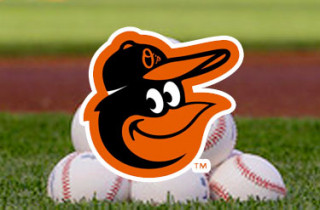Although it wasn't scheduled at the start of the season, the Orioles and White Sox played a traditional doubleheader at Camden Yards on Thursday, a throwback to the 1960s when scheduled doubleheaders were the norm.
 After the first game, there was no clearing the stadium. No day-night deals. No needing two tickets for separate games. No set time for the start of the second game - except that it would start at 4:40 p.m., 40 minutes after the first was done.
After the first game, there was no clearing the stadium. No day-night deals. No needing two tickets for separate games. No set time for the start of the second game - except that it would start at 4:40 p.m., 40 minutes after the first was done.
The Orioles and White Sox played two Thursday as makeups for the games that were postponed due to protests and violence in Baltimore in April.
The record for the most doubleheaders played in one season was 44 by the 1943 White Sox.
In 1960, National League teams played 18 percent of their games in doubleheaders, the American League 25 percent. By 2009, teams were playing less than two percent of their games in scheduled doubleheaders.
Generally, doubleheaders fell off the schedule because teams were drawing well for single games. In 1973, with the introduction of the designated hitter and more scoring, attendance grew and the need for doubleheaders dropped off.
Doubleheaders are only played today because of weather problems. In 2011, for example, the Nationals called off a home game versus Pittsburgh because of thunderstorm threats. The rain never came, and the two teams played a traditional doubleheader the following day.
Baseball's last scheduled doubleheader was July 16, 2011 in Oakland, when the A's were given permission by Major League Baseball to schedule a doubleheader against the Los Angeles Angels. The A's were trying to beef up ticket sales during a lull.
The A's thought a doubleheader would boost attendance for their second game back after the All-Star break. And they were right: They sold 27,300 tickets for the double dip, 11,000 more than their average attendance.
Commissioner Rob Manfred told ESPN that scheduling more doubleheaders will be part of the negotiations for the new Basic Agreement in 2016. Manfred says that playing 162 games in 183 days is not easy for the players, considering that most off days are used for travel.
If teams were allowed to schedule doubleheaders, the benefits would be that the billion-dollar industry would be giving fans a 2-for-1 deal, always a good business practice whether you're running a baseball team or a hardware store.
More doubleheaders would mean more off-days for players and shorter seasons. Baseball wouldn't have to start in the nasty cold of March or end with the World Series in the snow of early November. And, as MLB cuts the average time of game, doubleheaders could be practical.
If teams were scheduling one doubleheader a month, the postseason could start the last week in September.
The point is this: The season is too long. Too much of a good thing, especially when the World Series is played in 30-degree temperatures with players wearing earlap caps, hurts the game more than it helps. There's no need to be playing the World Series on Halloween.
If I were the commissioner, I'd push for more doubleheaders and a quicker pace to the season.
Then, the season would be twice as nice.
By accepting you will be accessing a service provided by a third-party external to https://www.masnsports.com/





